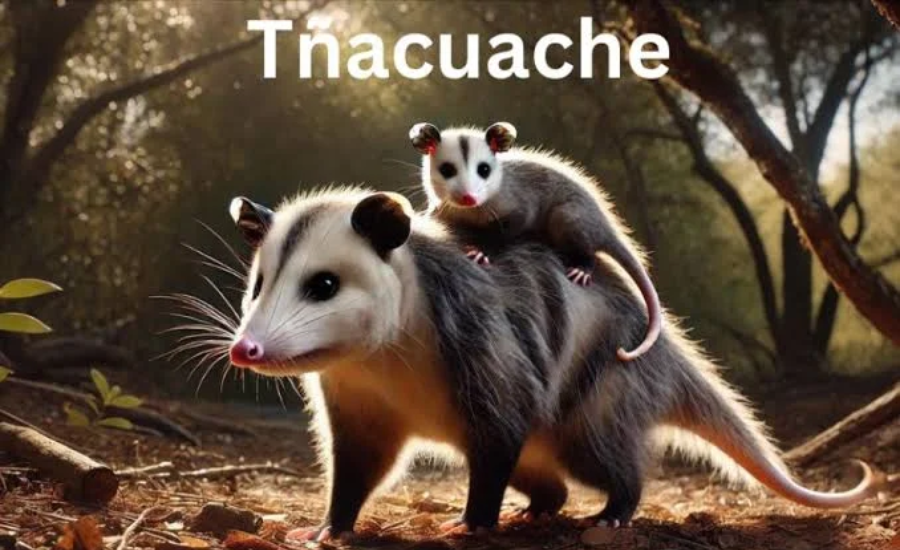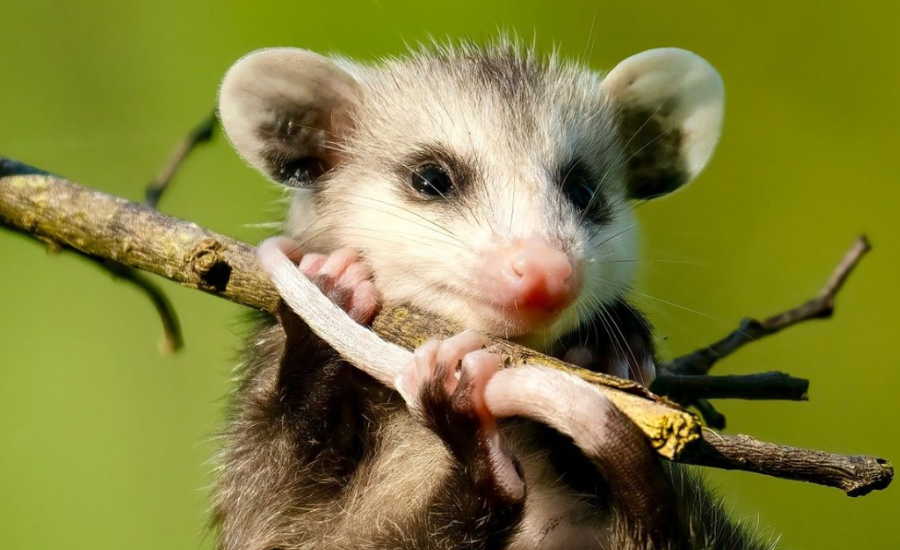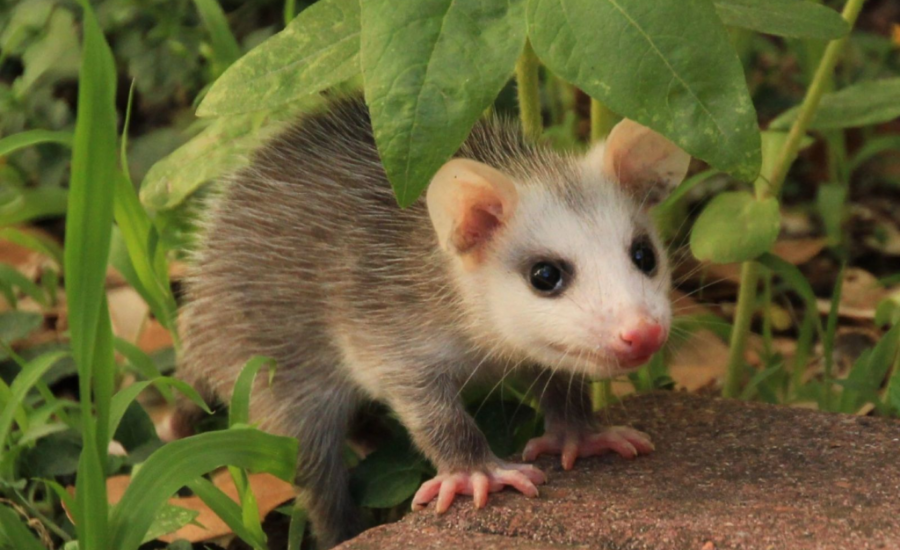The tñacuache, also known as the opossum, is a captivating and resilient marsupial that has long inhabited various regions of the Americas. This unique creature has earned its place not only in the ecological system but also in folklore and cultural symbolism. The tñacuache’s adaptability, survival mechanisms, and behavior serve as a fascinating reminder of the importance of creativity and resilience. By understanding the life of the tñacuache, we can draw important lessons for professionals, particularly in the music industry, who are constantly navigating change, challenges, and opportunities.
What is a Tñacuache?

The tñacuache is a marsupial species commonly found across the Americas, especially in Mexico, Central America, and parts of the southern United States. Like other marsupials, the tñacuache gives birth to underdeveloped young, which then continue to develop in the safety of the mother’s pouch. The term “opossum” is frequently used to describe this creature, but the tñacuache is specifically the species native to Mexico and Central America. This animal’s behavior and physical traits are not only fascinating but also reflect a strong survival instinct in the face of changing environments.
Key Features of the Tñacuache
Tñacuaches are known for their physical features, which contribute to their adaptability and survival. These creatures have several traits that make them highly resilient and capable of thriving in diverse environments.
Size and Weight:
Adult tñacuaches can range from 15 to 20 inches in length, excluding their tail. They typically weigh between 2 to 14 pounds, depending on the species and the specific environment in which they live. Their size allows them to be agile and versatile, both on the ground and in trees.
Appearance:
The tñacuache has grayish-white fur, a long pointed snout, dark eyes, and a hairless tail that is particularly useful for balance and climbing. This tail is an essential tool, helping the tñacuache maintain its balance in trees and move efficiently through its habitat. The animal’s overall appearance reflects its adaptability, with features designed for survival in a variety of habitats.
Adaptability of the Tñacuache

The tñacuache is remarkable for its ability to adapt to a wide range of environments. From dense forests to urban areas, these creatures can thrive in both natural and human-influenced landscapes.
North America:
In the southern parts of the United States, particularly in Texas and Louisiana, the tñacuache is a common sight. It is well adapted to the diverse climates and ecosystems of North America, from wetlands to dry deserts.
Central America:
The tñacuache is prevalent in Central America, including Mexico, Guatemala, Costa Rica, and Panama. These regions provide a diverse array of habitats, including forests, mountains, and coastal areas, where the tñacuache has flourished.
South America:
While the tñacuache is most often associated with North and Central America, some species have extended their range into northern South America, particularly in Colombia and Venezuela.
This adaptability is a key survival strategy, and it serves as a metaphor for how individuals in the music industry, or any creative profession, can thrive by remaining flexible and open to new opportunities, whether in terms of style, genre, or platform.
The Versatile Diet of the Tñacuache

The tñacuache’s diet is omnivorous, which further enhances its adaptability. By eating both plants and animals, this marsupial can adjust its diet based on what is available in its environment, much like artists who diversify their skills and offerings to stay relevant in a rapidly changing world.
Typical Foods Consumed by the Tñacuache:
- Fruits: Bananas, apples, and berries are among the tñacuache’s favorite fruits.
- Insects: These creatures also feed on various insects such as beetles, crickets, and spiders.
- Small Mammals and Birds: In some cases, tñacuaches hunt small mammals and birds, though this is less common than foraging for plants and insects.
- Human Food: In urban areas, tñacuaches are known to scavenge human food, often rummaging through trash cans and dumpsters.
The flexibility of the tñacuache’s diet is an important lesson for music artists and other creative professionals. Just as the tñacuache adapts its food sources to its surroundings, artists can enhance their success by diversifying their skills and embracing new forms of expression. Whether through different music genres, collaborating with other artists, or exploring new digital platforms, flexibility is essential for long-term survival in the competitive music industry.
Behavior and Survival Tactics of the Tñacuache

The behavior of the tñacuache provides valuable insights into how one can overcome adversity and adapt to changing circumstances. Its survival tactics, such as playing dead to avoid predators and nocturnal foraging, offer important lessons for professionals in any field, including the music industry.
Playing Dead: A Strategic Defense Mechanism
One of the most well-known behaviors of the tñacuache is its ability to play dead when threatened. This is a defense mechanism that causes potential predators to lose interest, allowing the tñacuache to survive. By playing dead, the tñacuache avoids confrontation and waits for the danger to pass. For music artists, this can be likened to strategic patience—taking a step back and evaluating situations rather than reacting impulsively to threats or challenges.
Nocturnal Habits
The tñacuache is primarily nocturnal, which means it is most active at night. This behavior allows the tñacuache to avoid daytime predators while foraging for food. In a metaphorical sense, the nocturnal habits of the tñacuache encourage the importance of finding unconventional opportunities. For artists, this could translate to working during times when others are not—finding quiet moments to hone their craft or exploring new, less crowded platforms for performance and innovation.
Solitary Lifestyle
Tñacuaches are solitary creatures for much of their lives. They come together only for mating and parenting, and otherwise, they tend to operate independently. This solitary nature allows them to focus on their own survival and development, much like artists who often spend significant amounts of time working alone to perfect their craft. However, the occasional need for collaboration during mating or parenting is also a reminder of the importance of connections and partnerships in the creative world.
The Reproductive Journey of the Tñacuache
The reproductive cycle of the tñacuache is an excellent example of resilience and nurturing. Female tñacuaches give birth to underdeveloped young, which immediately crawl into their mother’s pouch for further development. This early stage of dependence on the mother represents the importance of mentorship and guidance in an artist’s journey.
- Mating and Birth: During spring, females give birth to young that are not yet fully developed. These newborns crawl into the mother’s pouch for nourishment and protection.
- Pouch Dependency: The joeys remain in the pouch for several weeks, where they grow stronger and continue their development.
- Independence: After about 4 to 5 months, the young leave their mother’s pouch and begin their journey of independence.
For music artists, this stage symbolizes the importance of early mentorship and the nurturing that takes place in the formative years of an artist’s career. Over time, as artists gain experience and self-reliance, they too must learn to stand on their own, making independent decisions while occasionally seeking out collaboration and guidance when needed.
Cultural Significance of the Tñacuache

In Mexican folklore, the tñacuache plays an important role, often seen as a symbol of creativity and resourcefulness. One legend tells of how the tñacuache brought fire to humans, further enhancing its reputation as a bringer of light and innovation. This tale positions the tñacuache as a hero, embodying the idea of using one’s abilities to improve the world.
Today, the symbolism of the tñacuache continues to resonate. As a creature that thrives in difficult circumstances, the tñacuache represents resilience and the power of adaptability. For professionals in the music industry, the tñacuache serves as a reminder to remain flexible and resourceful, even when faced with challenging conditions.
Coexisting with the Tñacuache
As urbanization spreads, encounters between humans and tñacuaches have become more common. These creatures are generally harmless and can coexist with people in urban areas if certain precautions are taken.
Practical Tips for Coexisting:
- Secure Trash: Use trash cans with tight-fitting lids to prevent tñacuaches from scavenging.
- Avoid Feeding: While it may be tempting to feed wildlife, doing so disrupts their natural foraging behavior and can cause dependence on human food.
- Contact Animal Control: If you need to remove a tñacuache from your property, it’s best to call animal control to handle the situation safely.
These practices promote a harmonious relationship between humans and tñacuaches, demonstrating that adaptability and balance are crucial to success. In the same way, music professionals must find a balance between their personal creativity and the demands of the industry, ensuring that they can thrive without sacrificing their authenticity.
Lessons for Music Artists
The life of the tñacuache offers a wealth of lessons that can be applied to the music industry. By looking at how this marsupial navigates challenges, adapts to changing environments, and survives through resilience and strategy, music artists can learn valuable insights into their own creative journey.
- Adapt to Change: Just as the tñacuache thrives in different habitats, artists must be open to exploring various genres, experimenting with new styles, and embracing evolving technologies.
- Embrace Resilience: Like the tñacuache’s ability to survive in harsh conditions, artists must develop resilience in the face of setbacks, competition, and market changes.
- Strategic Patience: The tñacuache’s defense mechanism of playing dead serves as a reminder to take a step back when necessary and wait for the right moment to act.
- Creative Resourcefulness: The tñacuache’s ability to adapt its diet and behavior for survival parallels the need for artists to remain creative and resourceful, especially in a rapidly changing industry.
In the ever-evolving world of music, the tñacuache’s story teaches us that success often requires a blend of innovation, flexibility, and resilience.
Facts
- Geographical Range:
The tñacuache is commonly found in Mexico, Central America, and parts of the southern United States.
- Physical Features:
Adult tñacuaches range from 15 to 20 inches in length, excluding their tail. They typically weigh between 2 to 14 pounds.
- Diet:
The tñacuache is omnivorous, eating fruits, insects, small mammals, birds, and human food, especially in urban areas.
- Behavior:
Known for playing dead (a defense mechanism), being nocturnal, and having a solitary lifestyle.
- Reproduction:
Female tñacuaches give birth to underdeveloped young that crawl into the mother’s pouch for protection and nourishment.
- Cultural Significance:
In Mexican folklore, the tñacuache is often seen as a symbol of creativity and resourcefulness, with stories about how it brought fire to humans.
Frequently Asked Questions (FAQs)
Q: What is a tñacuache?
A: A tñacuache, also known as an opossum, is a marsupial native to the Americas, particularly Mexico and Central America. It is known for its adaptability, unique survival tactics, and nocturnal behavior.
Q: How big is a tñacuache?
A: Adult tñacuaches measure about 15 to 20 inches in length, excluding the tail, and can weigh between 2 to 14 pounds.
Q: What does the tñacuache eat?
A: The tñacuache is omnivorous, consuming fruits (like bananas and berries), insects, small mammals and birds, and sometimes human food, especially in urban environments.
Q: How does the tñacuache defend itself?
A: When threatened, the tñacuache plays dead, a tactic known as “playing possum,” which helps it avoid predators.
Q: Where can I find tñacuaches?
A: Tñacuaches are found in North and Central America, including areas in the southern United States, Mexico, and parts of Central America like Guatemala, Costa Rica, and Panama.
Q: Why is the tñacuache important in Mexican culture?
A: In Mexican folklore, the tñacuache symbolizes creativity and resourcefulness. One legend tells of how it brought fire to humans, enhancing its reputation as a bringer of light and innovation.
Conclusion
The tñacuache is more than just an ordinary marsupial—it is a symbol of adaptability, resilience, and resourcefulness. Its ability to thrive in various environments, overcome adversity through unique survival tactics, and its role in folklore make it an intriguing creature. For professionals in the music industry, the tñacuache offers valuable lessons about navigating change, adapting to new opportunities, and demonstrating resilience. By embracing flexibility and creativity, artists can draw inspiration from the tñacuache’s strategies to succeed in a rapidly evolving industry.
Remain connected to this: Wnflb
